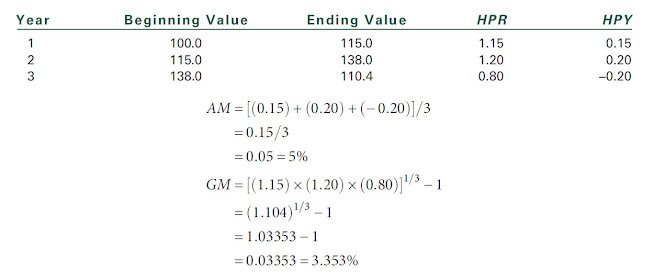An investor would be willing to forgo current consumption in order to increase future consumption at a rate of exchange called the risk-free rate of interest. This rate of exchange was measured in real terms because we assume that investors want to increase the consumption of actual goods and services rather than consuming the same amount that had come to cost more money. Therefore, when we discuss rates of interest, we need to differentiate between real rates of interest that adjust for changes in the general price level, as opposed to nominal rates of interest that are stated in money terms. That is, nominal rates of interest that prevail in the market are determined by real rates of interest, plus factors that will affect the nominal rate of interest, such as the expected rate of inflation and the monetary environment. It is important to understand these factors.
Notably, the variables that determine the RRFR change only gradually because we are concerned with long-run real growth. Therefore, you might expect the required rate on a risk-free investment to be quite stable over time. As discussed in connection with Exhibit 1.5, rates on three-month T-bills were not stable over the period from 2004 to 2010. This is demonstrated with additional observations in Exhibit 1.6, which contains yields on T-bills for the period 1987–2010.
Investors view T-bills as a prime example of a default-free investment because the government has unlimited ability to derive income from taxes or to create money from which to pay interest. Therefore, one could expect that rates on T-bills should change only gradually. In fact, the data in Exhibit 1.6 show a highly erratic pattern. Specifically, there was an increase in yields from 4.64 percent in 1999 to 5.82 percent in 2000 before declining by over 80 percent in three years to 1.01 percent in 2003, followed by an increase to 4.73 percent in 2006, and concluding at 0.14 percent in 2010. Clearly, the nominal rate of interest on a default-free investment is not stable in the long run or the short run, even though the underlying determinants of the RRFR are quite stable. As noted, two other factors influence the nominal risk-free rate (NRFR): (1) the relative ease or tightness in the capital markets, and (2) the expected rate of inflation.
Conditions in the Capital Market
You will recall from prior courses in economics and finance that the purpose of capital markets is to bring together investors who want to invest savings with companies or governments who need capital to expand or to finance budget deficits. The cost of funds at any time (the interest rate) is the price that equates the current supply and demand for capital. Beyond this long-run equilibrium, change in the relative ease or tightness in the capital market is a short-run phenomenon caused by a temporary disequilibrium in the supply and demand of capital.
As an example, disequilibrium could be caused by an unexpected change in monetary policy (for example, a change in the target federal funds rate) or fiscal policy (for example, a change in the federal deficit). Such a change in monetary policy or fiscal policy will produce a change in the NRFR of interest, but the change should be short-lived because, in the longer run, the higher or lower interest rates will affect capital supply and demand. As an example, an increase in the federal deficit caused by an increase in government spending (easy fiscal policy) will increase the demand for capital and increase interest rates. In turn, this increase in interest rates should cause an increase in savings and a decrease in the demand for capital by corporations or individuals. These changes in market conditions should bring rates back to the long-run equilibrium, which is based on the long-run growth rate of the economy.
.png)
.png)
.png)
.png)
.png)
.png)

.png)
.png)

.png)


.png)

















.png)

.png)
